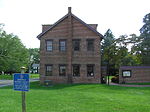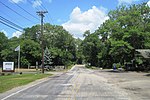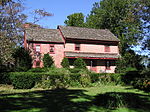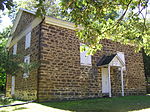Ewansville, New Jersey

Ewansville or Ewanville is an unincorporated community located in Burlington County, in the U.S. state of New Jersey. The community is centered on the crossing of U.S. Route 206 (US 206) and the North Branch Rancocas Creek just north of the former Philadelphia and Long Branch Railway (later Pennsylvania Railroad). Ewansville was the site of a station on the aforementioned railroad and was the terminus for a short spur track to Vincentown.Ewansville is located near the tripoint of Eastampton, Pemberton, Southampton townships. Pemberton Township is situated north of the creek and east of US 206, Eastampton Township generally to the west of US 206, and Southampton comprises the remaining area. Some trailer parks line US 206 in this area but permanent houses are also located on nearby Railroad Avenue and Indian Trail.
Excerpt from the Wikipedia article Ewansville, New Jersey (License: CC BY-SA 3.0, Authors, Images).Ewansville, New Jersey
Sikoneses Trail,
Geographical coordinates (GPS) Address Nearby Places Show on map
Geographical coordinates (GPS)
| Latitude | Longitude |
|---|---|
| N 39.978333333333 ° | E -74.735277777778 ° |
Address
Sikoneses Trail 8
08088
New Jersey, United States
Open on Google Maps





